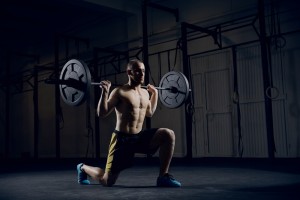Posted on November 07, 2016 by Jenny Cromack
The lunge/ split-squat is a definite favourite of mine, it’s a diverse exercise that can be used to develop both force and velocity components. As well as this, the positioning of the feet can be maipulated to bring focus to different muscle groups and activation patterns. Here are a variety of modifications you can use in your sessions to focus on what you need to focus on.
- Short Lunge– In this movement both feet should be positioned close to the body. This variation brings focus to the quad group, by limiting flexion/ extension at the hip.
- Long Lunge– To perform this movement stride out forwards further than would feel natural. This elongated position facilitates greater hip flexion and extension, resulting in far superior hamstring and glutei involvement.
- Rear Foot Elevated Lunge– This variation places far greater demand on the hamstring, the requirement to stabilise the knee is elevated as such lower loads are required. It is worth noting that the deeper you are able to go on this movement will dictate glute involvement. Deeper lunges = more glute involvement. Shallow lunges = more quad involvement.
- Front Foot Elevated Lunge– This variation places focus on the quad, as well as mobility of the hip flexors. Of all the lunge variations this provides the most thorough training of the quad, as knee flexion is greater.
- Sprinters Lunge: This movement involves a reverse lunge into a step up: It is generally used as a strength speed exercise to overload sprinting musculature. It is specific to hip flexor, glutei, hamstring and quad development. Rather than muscle specific development, this variation seeks to enhance running specific strength and mechanics.
- Lateral Lunge: During this movement a lateral step out into a lunge is performed. This is extremely demanding upon the adductors of the hip and requires great hip mobility. Superior focus of the glutei medius can be achieved through this movement, as well as developing the pelvis stabilisers.
There are lots more, but here are a few subtle variations you can use to drive your leg workouts to the next level.


